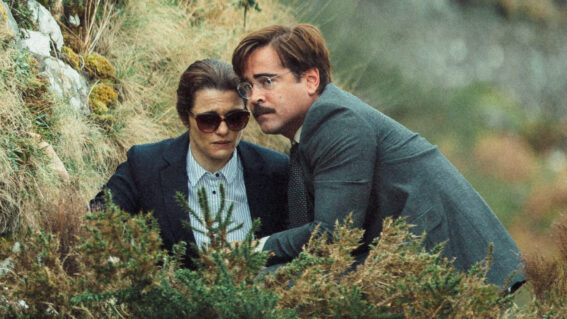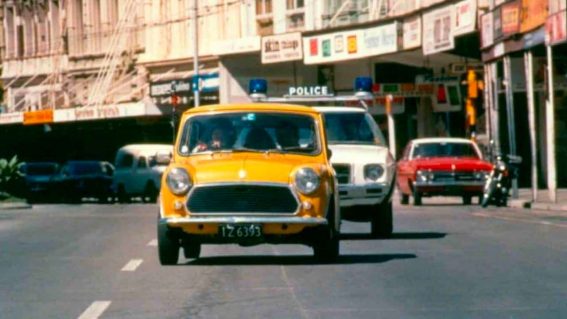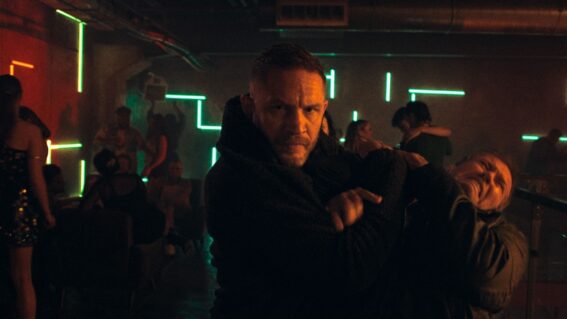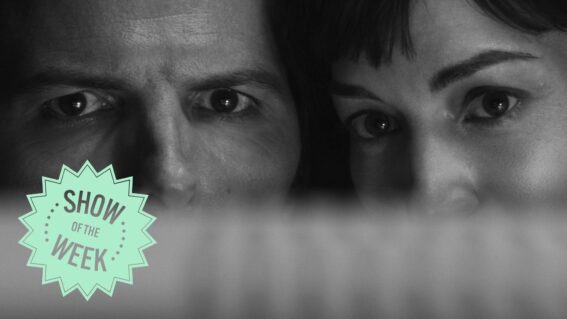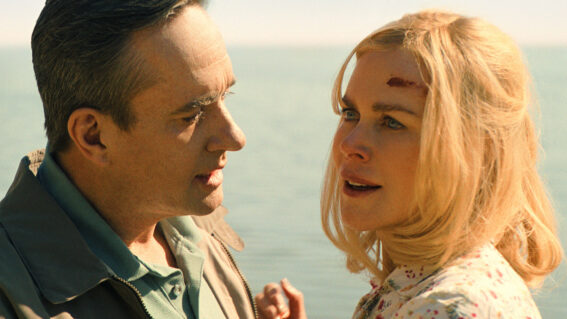I Kid You Not: Bambi is an ageless work of art
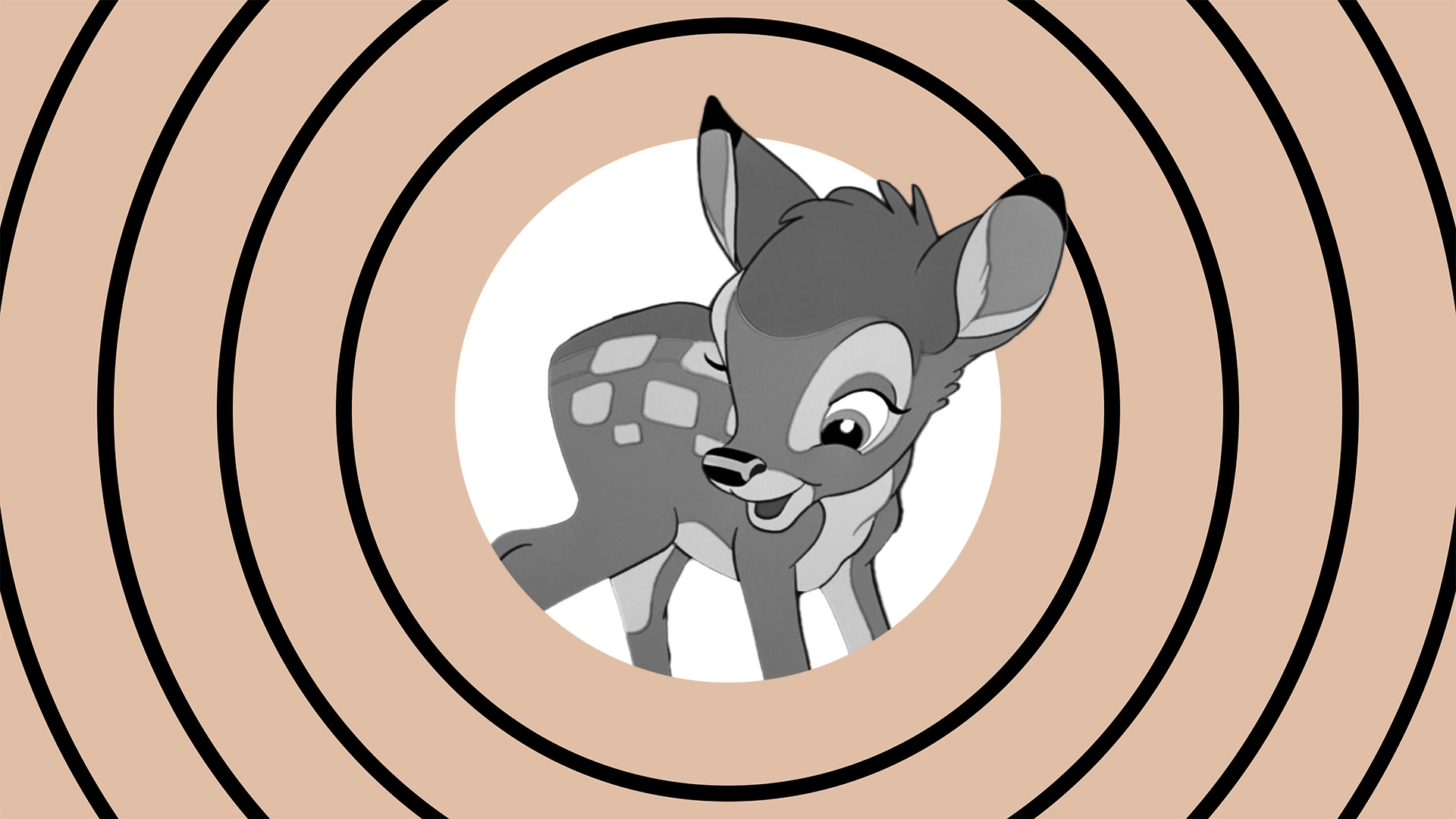
Who said family films aren’t cinema? In his column I Kid You Not, Liam Maguren critically evaluates the excellence in kids flicks and writes them into the history books. While it’s already regarded as a classic, some aren’t convinced that Disney’s Bambi is for kids. Liam dives into the issue.
This column is dedicated to kids films that deserve wider recognition, so Bambi might seem like an odd one to cover, given it’s already well regarded as a great piece of cinema. However, some may also argue the Disney classic is only great for kids or, stranger still, isn’t for kids at all.
“The idea of a separate children’s audience didn’t exist in 1942,” Prof Ian Christie wrote in an article titled Why Bambi isn’t for kids, “like its predecessors Snow White and the Seven Dwarfs, Pinocchio and Dumbo – [Bambi] terrified many youngsters accompanying their parents.”
Although it’s a much-needed reminder of the vastly different attitudes between old Disney and new Disney, I find the headline of the article misleading. Written as a response to claims that Bambi was “a cutesy schmaltzfest for kids,” Prof Christie’s argument aligns more with the idea that the film—and all the early Disney features, for that matter—weren’t specifically made for kids.
A subtle difference but an important one, especially when recognising Bambi as one of cinemas biggest miracles—an ageless film.
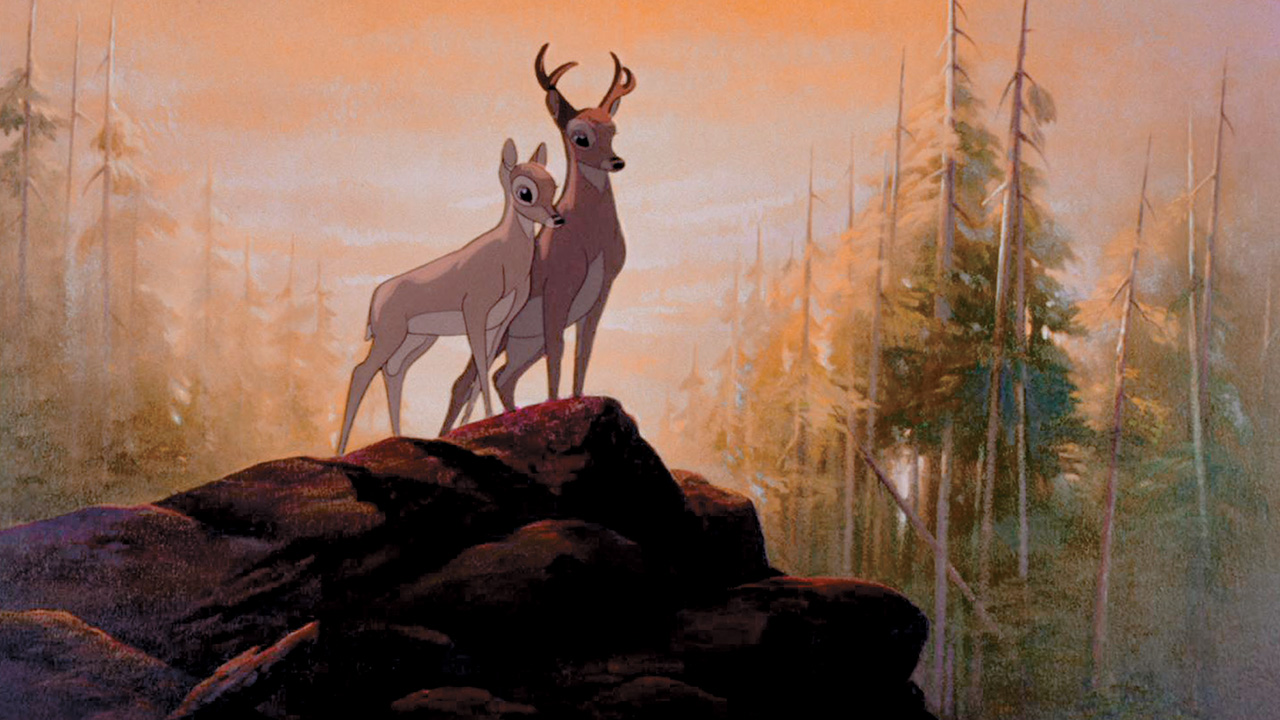
Contrary to how you may remember it, Bambi doesn’t have a typical three-act structure. The titular fawn enters the world, befriends other animals, observes flowers, hears thunder, experiences rain, slips on ice, learns grief, discovers buckhood, feels love, understands danger, and finds bravery. That’s a no-frills synopsis of the film.
Straying far away from Jewish author Felix Salten’s original allegorical book, Disney’s Bambi hones in on the essence of nature and growth, and rarely does such a thing conform neatly to a convenient fairy tale format. The film invites the audience, regardless of age, to (re)experience the majesty of life and the world around them for the first time.
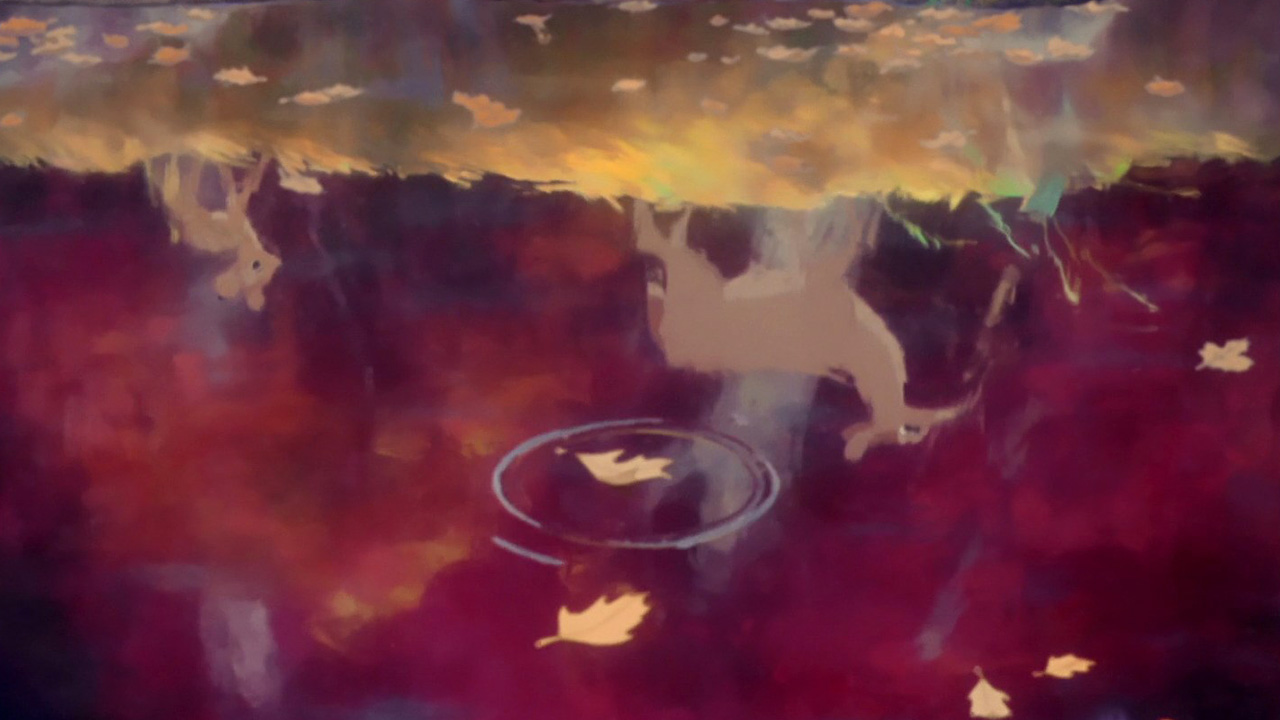
Most children latch onto Thumper. Voiced by an actual child, non-actor Peter Behn, his likeability and relatability came from his genuineness, often reading lines in unintended ways. Master animator Ollie Johnston observed Behn’s delivery closely and would then melt this authenticity into the character.
To this day, Thumper’s mannerisms read with compelling purity. One moment—when he goes to eat a blossom, only to be told by his mother “What did your father tell you,”—sees him deliver a head sway / eye roll combo followed by a sarcastic, “’bout what?” It’s subtle but perfect, an infectiously on-point replication of how a cheeky child reacts to being lectured for the 200th time.
Thumper wasn’t created for a child audience. He was created to be a child. Disney did such a fine job of it, children naturally attached themselves to him.
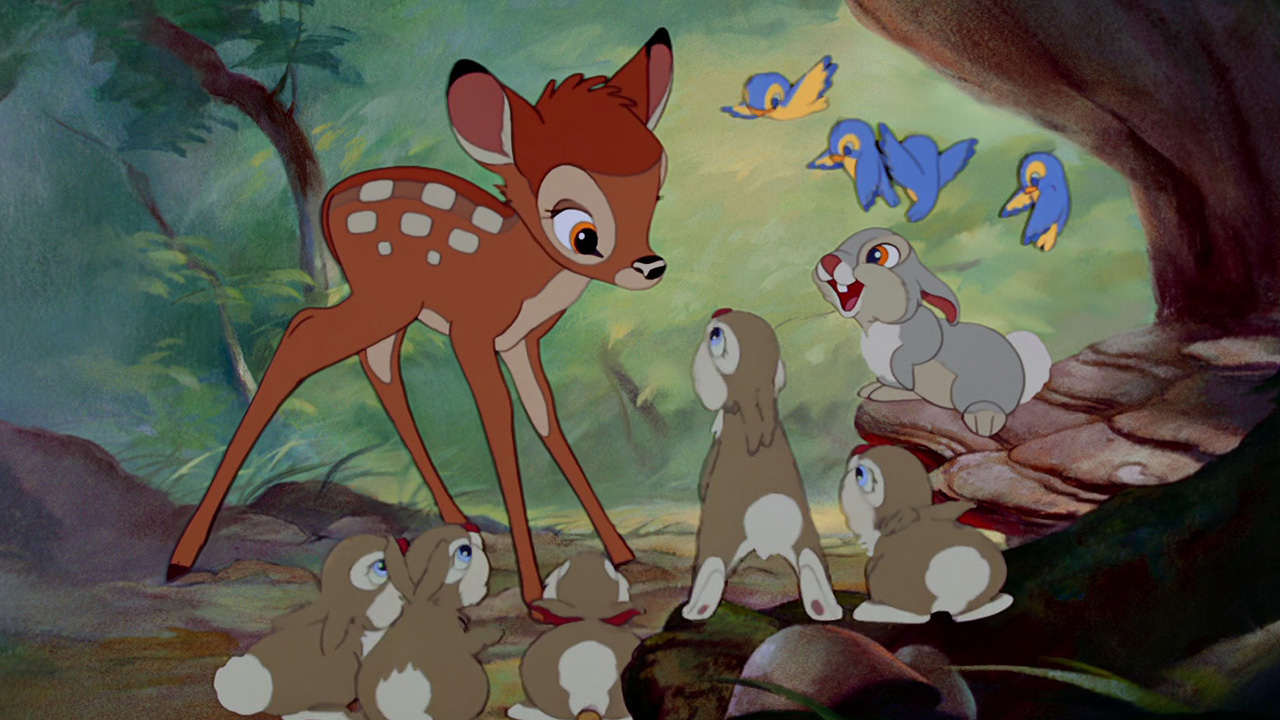
We’re grossly inundated with films and shows featuring realistic talking animals, so it’s easy to forget how novel it was for an audience in 1942 to see an anatomically correct rabbit behaving so much like a human boy. Before Bambi, animals took on more of a cartoonish look, evident in Disney’s previous features where critters would bend and twist like rubber. But for this production, reflecting nature was key, and by studying the movements and anatomy of animals closely, the animators pushed realism and personification closer together.
Some critics didn’t take to it back then. “One cannot combine naturalism with cartoon fantasy,” claimed the New York Times. They weren’t to know just how far the medium would push that combination, and I can only wish to read that critic’s thoughts on a certain other Disney film.
Adding to this more realistic but still heightened depiction of nature, the studio overloaded the senses with stunning oil-based backgrounds—a first for the typically watercolour-based team. Luminous colours, striking lights, and swamping shadows combine with exaggerated force to draw out what we imagine to be a wondrous new world from an innocent fawn’s eyes.
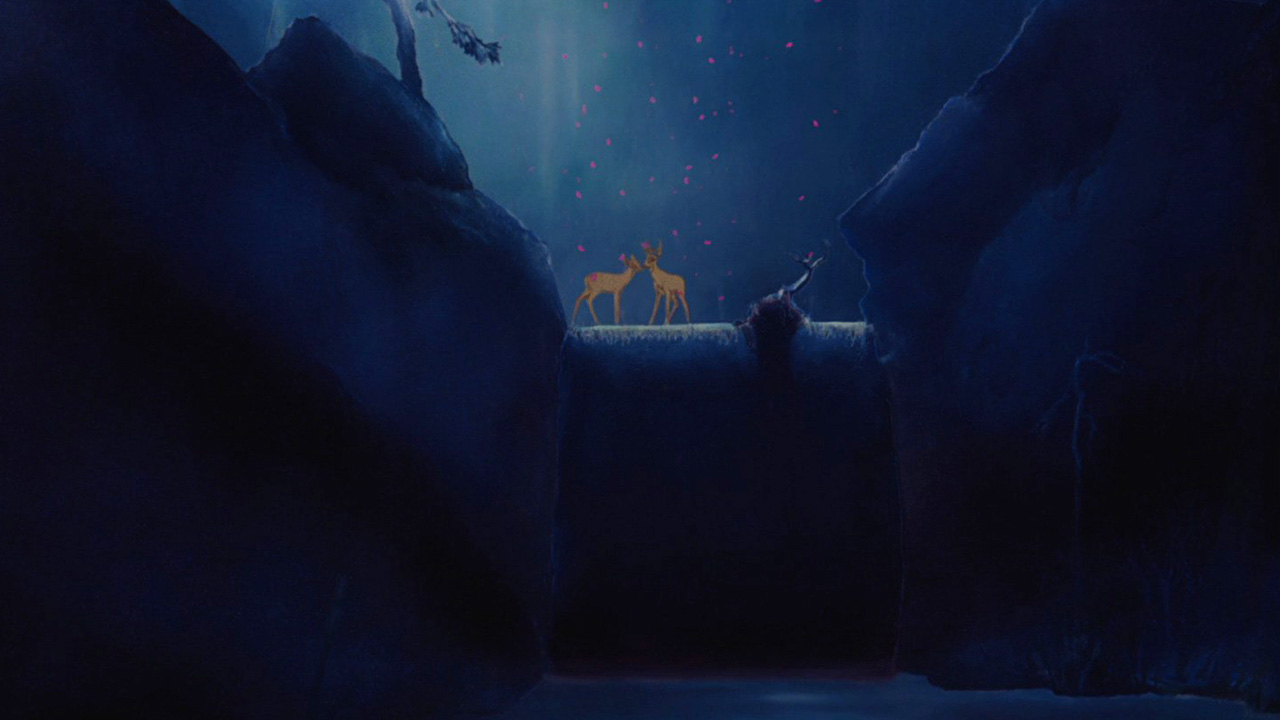
The environments also reflect Bambi’s emotional states as he feels them for the first time. Joy blooms from the bright yellows and highlighter greens of the fauna and grass when Bambi first meets his skunk friend Flower. Intimacy sinks into the moody blue sky, peppered with pink petals when he and Faline fall in love. Panic and fury flare with burnt reds and Rembrandt-esque oranges during the forest fire sequence. Every frame is a painting.
This interplay comes into full force when Bambi’s mother dies. We hear the bullet fire but never see her shot. We’re left with young Bambi, alone, completely unaware of his mother’s fate. But we’re aware. We see it in the gloomy tangle of leafless trees cutting through the washed-out navy of the darkened night. We hear it in the haunting choir’s chorus and Bambi’s call for his mother being met with lonely echoes. No one ever says Bambi’s mother dies. No one has to.
It’s a masterful display of “show, don’t tell” in an atypically low-dialogue Disney film dedicated to visual storytelling. It’s also a moment many describe as frightening, sad, traumatic—and thus, inappropriate for kids.
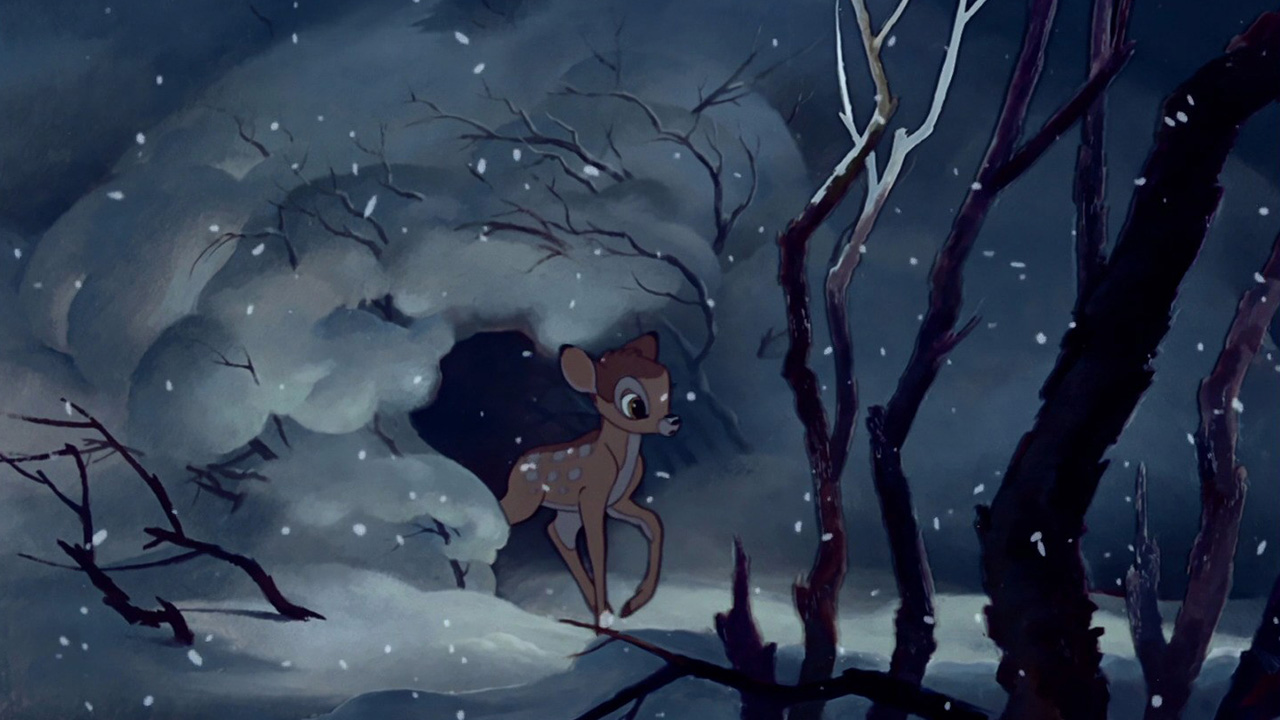
It’s a natural response; parents want to protect their kids after all. But consider this: death is an unavoidable fact of life which kids will come across, whether to mourn a beloved pet or the passing of a family member, so why not introduce them to those feelings in a cinematic safe space first? That experience will familiarise them with those feelings in real-life situations, make them emotionally stronger, and ultimately offer them more protection down the line.
To say ‘Bambi isn’t for kids’ would deny them a film that can offer this valuable learning opportunity, and to follow that line of logic would mean putting its biggest imitator, The Lion King, under the same bus. Often referred to as African Bambi during production, the team behind the ’90s megahit fully admit to using Bambi as a blueprint, especially in regards to its climax and Bambi‘s original depiction of The Circle of Life.
To be fair, The Lion King‘s “circle” feels more in line with pro-capitalism values with Mufasa’s take on trickle-down economics where the upper class give back to their community only when they’re dead—i.e. their “bodies become the grass and the antelope eat the grass.” Bambi‘s “circle” on the other hand feels more representative of the sustainable quality of nature.
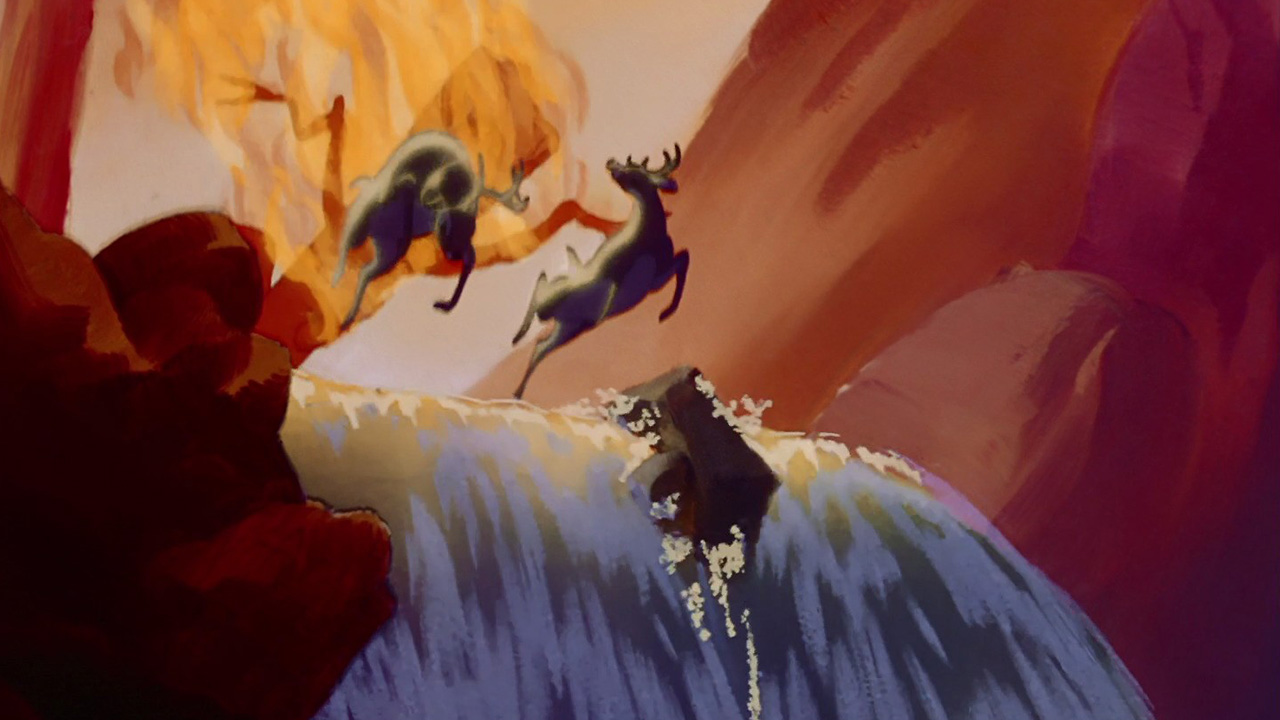
Spring graces the land with rain (depicted wondrously with the catchy tune April Showers) just as Winter deprives it through arduously harsh conditions (“Winter sure is long, isn’t it?”). Bambi observes these ebbs and flows objectively throughout his life until he reaches the same status as The Great Prince of the Forest—the oldest stag respected for his wisdom—and gives life to two fawns ready to embark on the same cycle. Their growth will also rely on the world’s two big inevitabilities—beauty and danger.
Man is the film’s biggest source of danger, depicted here as a faceless and voiceless force of nature akin to an earthquake or a hurricane. Recreational hunters at the time were quite unhappy about it, though Walt Disney wanted to go way harder by showing a hunter burning alive in the forest fire he created. The moment would’ve driven home the idea of man being the destroyer of everything—including themselves—but they cut the scene, choosing instead to not show any human beings on screen.
Ponder on that. A feature-length film in 1942 that didn’t show a single human being on screen. It was unheard of. On top of that, the studio also chose to innovate through inspired background work and a revolutionary approach to animating personified animals. And the spine of this production? A story that isn’t really a story but more of a freeform rumination on innocence, adaptation, the natural world, and the cyclical nature of life.
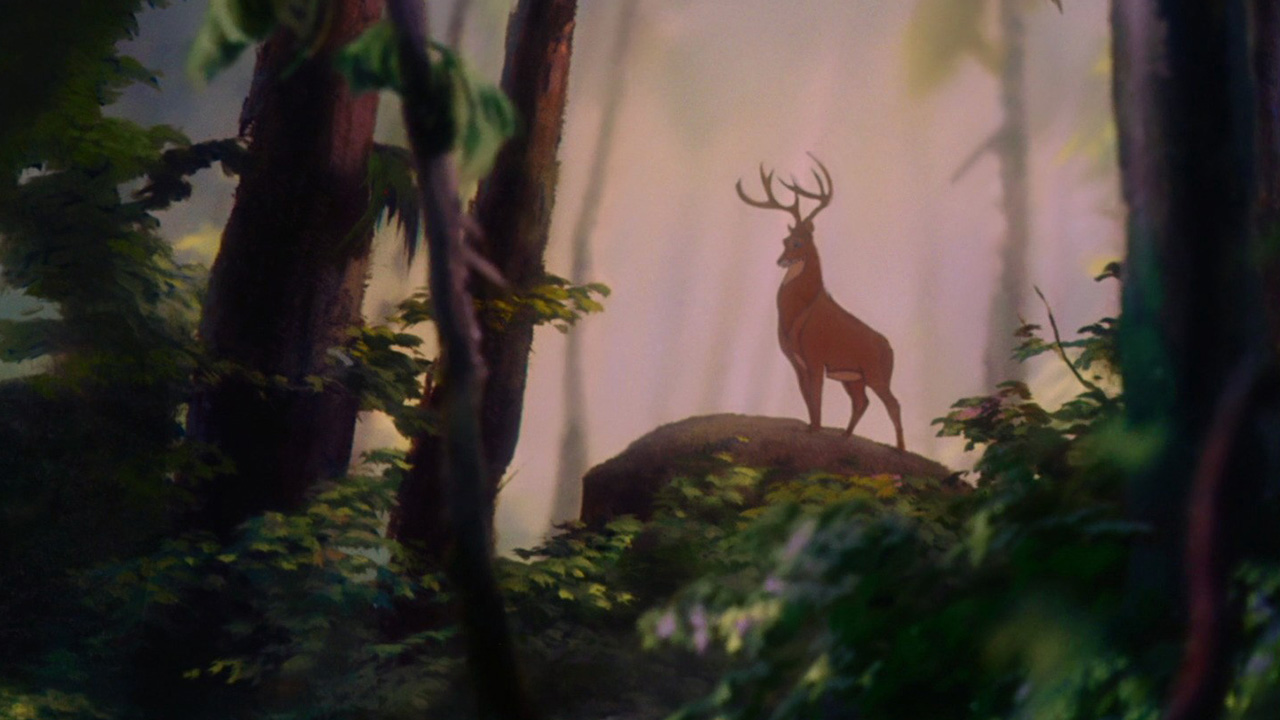
It’s hard to imagine the inevitable Disney “live-action” remake showing any of the original’s boldness to defy convention—or to be more faithful to Salten’s bleaker text. Bambi II, 2006’s retconning abomination of a sequel, didn’t do either of those things. And Scott Jeffrey, director of childhood hit job horror Winnie-the-Pooh: Blood and Honey, will do exactly what is expected of him with the upcoming Bambi: The Reckoning.
Really, no film needs to retrace Bambi‘s hoofprints. It continues to be a powerful cinematic experience that shows us, and reminds us of, the wondrous details of the natural world that we eventually take for granted.
As such, the film grows and changes with whoever continues to view it throughout their life. As as a child, you relate to Bambi’s curious nature. As a young adult, you become more attached to its themes of wisdom and rejuvenation. As an older adult, you recognise its status as a great work of art.
Bambi isn’t just a film for kids; it’s a film for everyone. It’s ageless.





